We have now added over 1800 new entries to our list of railwaymen who died in the First World War, and our research demonstrates that not all railwaymen spent the war in trenches on the western front. During the First World War railwaymen served all over the world, hundreds served on ships and many experienced extraordinary adventures in stark contrast to their jobs at home.
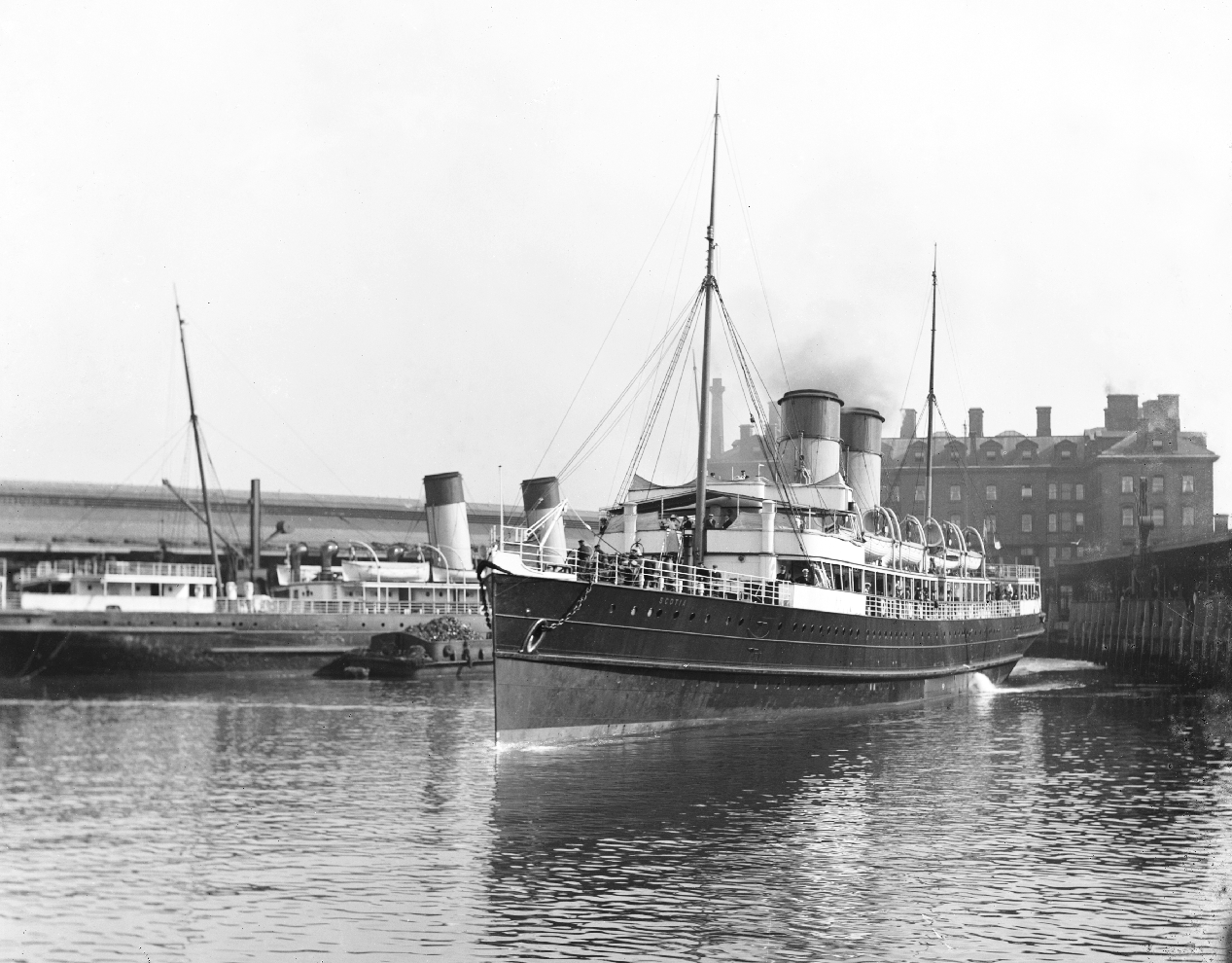
On 5 November 1915 HMS Tara – formerly the London and North Western Railway (LNWR) ship Hibernia – was sunk by a German submarine whilst part of the North Egyptian coast patrol. Many of the ship’s staff were LNWR men.
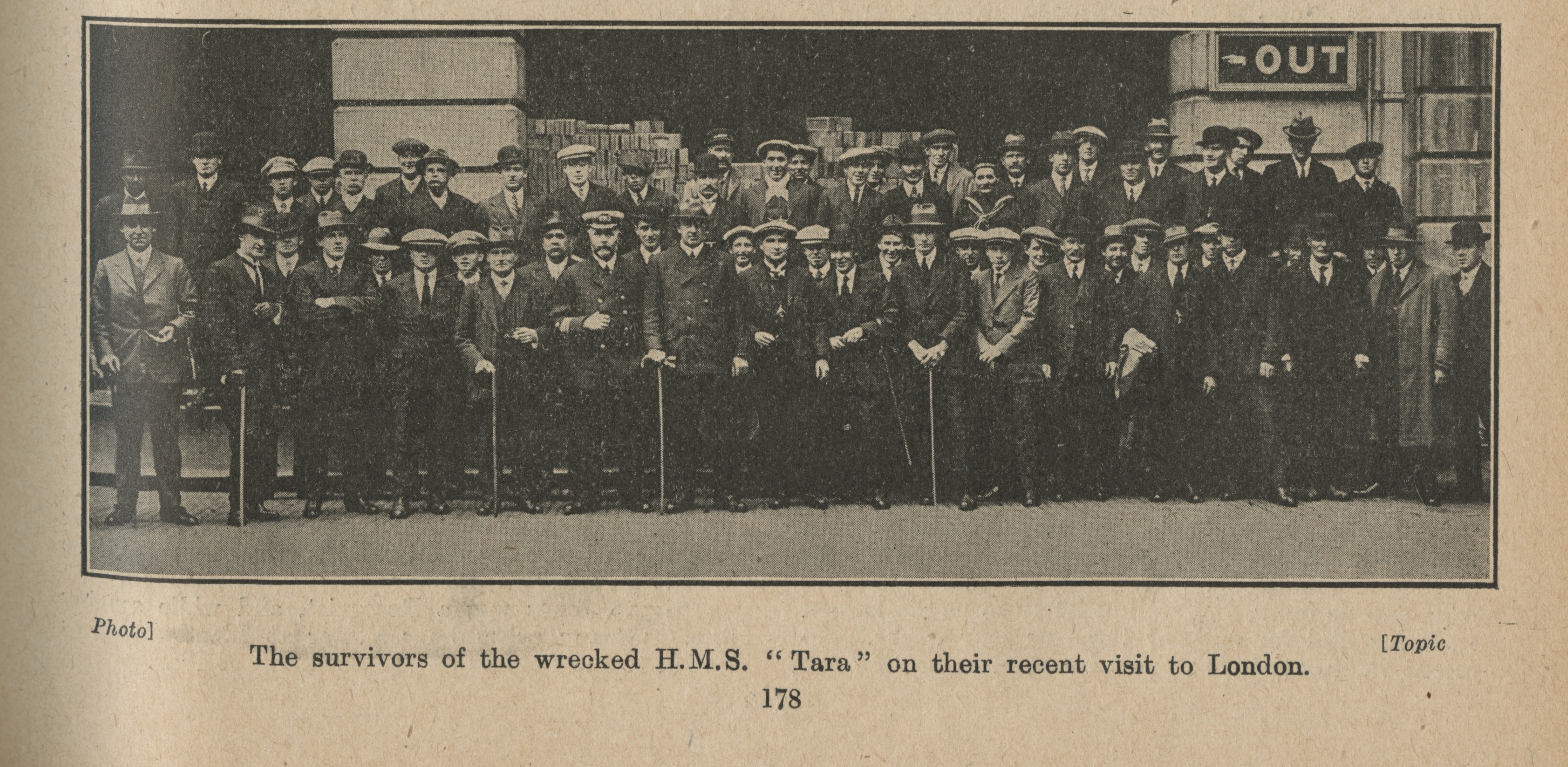
Twelve officers were tragically drowned when the boat was torpedoed. The 92 survivors, mostly made up of railwaymen, were taken prisoner by the Arab Senoussi tribe. The men were taken deep into the Libyan Desert where they stayed for a number of months, those at home presuming they had been lost.
During the cold, dark, hungry and uncomfortable nights, held captive in deep in the desert, with no apparent means of escape, the railwaymen found an unlikely way of passing the time. The men ‘almost came to blows’ whilst arguing over correct times for trains to various British seaside resorts and ‘waxed hot’ on the exact cost of the ticket – you can take the man out of the railway, but you can’t take the railway out of the man!
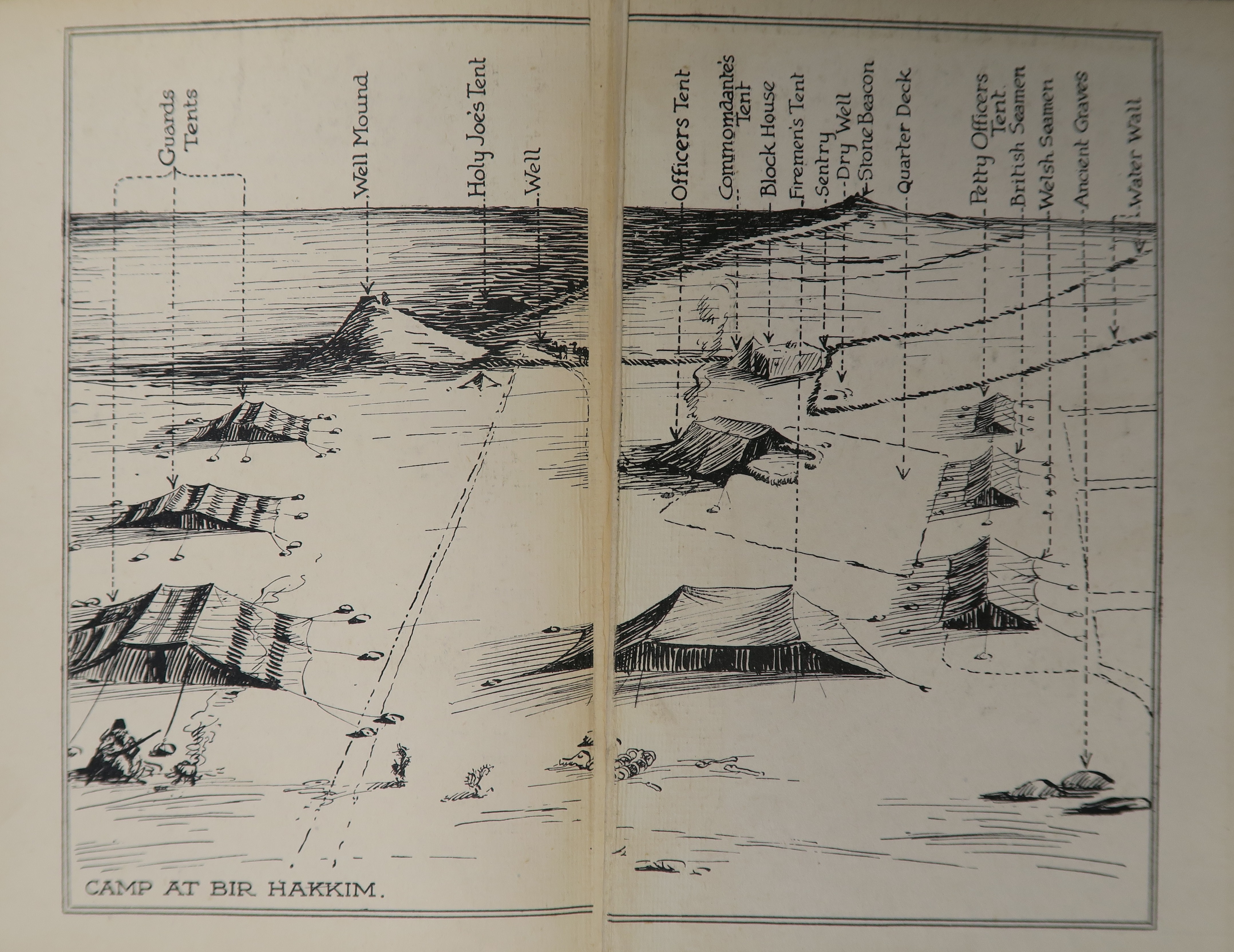
The men survived on meagre rations and told of eating endless amounts of snails to stay alive, they even ate dead camel which had been down a well for two days. On Christmas day the prisoners used rations to cook a special pudding, boiled for five hours in LNWR employee Captain Tanner’s spare pair cotton Arab trousers. They named the finished pudding the ‘Petty Officer’.
Finally on St Patrick’s Day 1916 – four months since they were captured – the men were saved. Their saviour was the Duke of Westminster, who was serving as a Major in the Cheshire Yeomanry. The Duke arrived at their camp at daybreak leading a fleet of Ford cars, escorted by Rolls Royces. A dramatic end to their perilous ordeal.
On 17 May 1916 the LNWR held a banquet for the former Tara prisoners at the Euston Hotel, details of their exuberant day can be found in the LNWR Gazette.
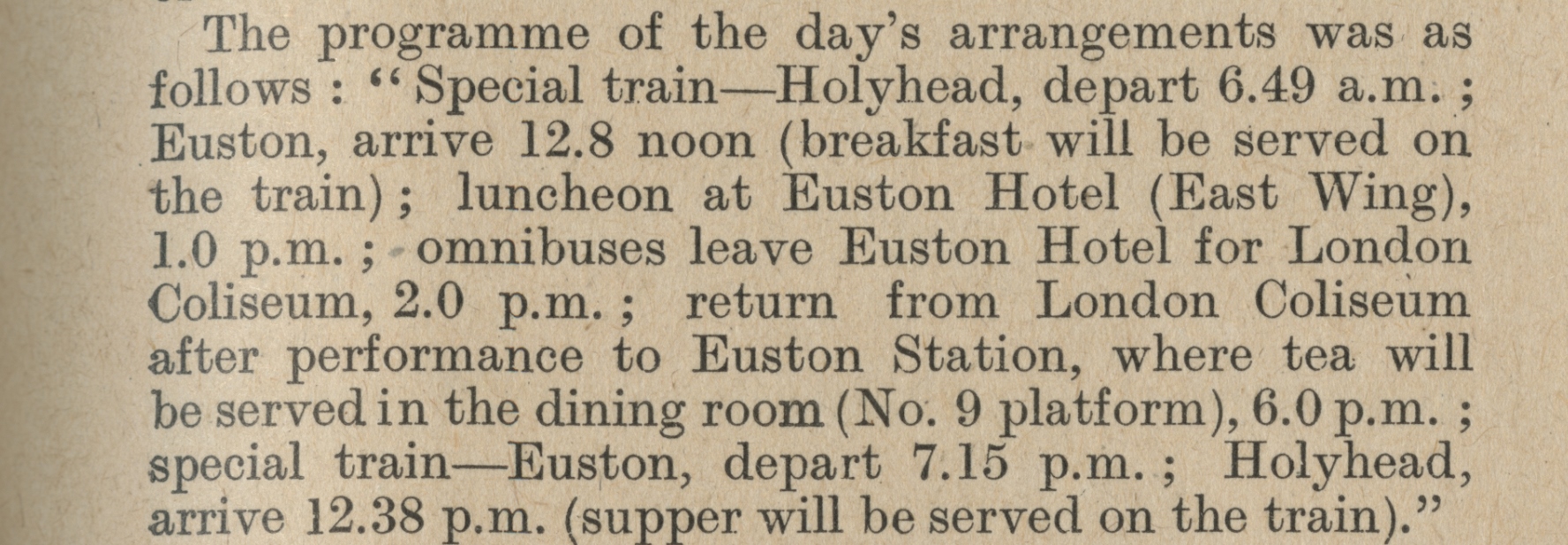
The Duke of Westminster could not be present at the dinner but sent the following message:
“Mind you give my kindest greetings to all the men, and mind you give them snails for a remembrance.”
The below photograph shows the men at Euston Hotel two months after they were saved, some still looking rather thin.
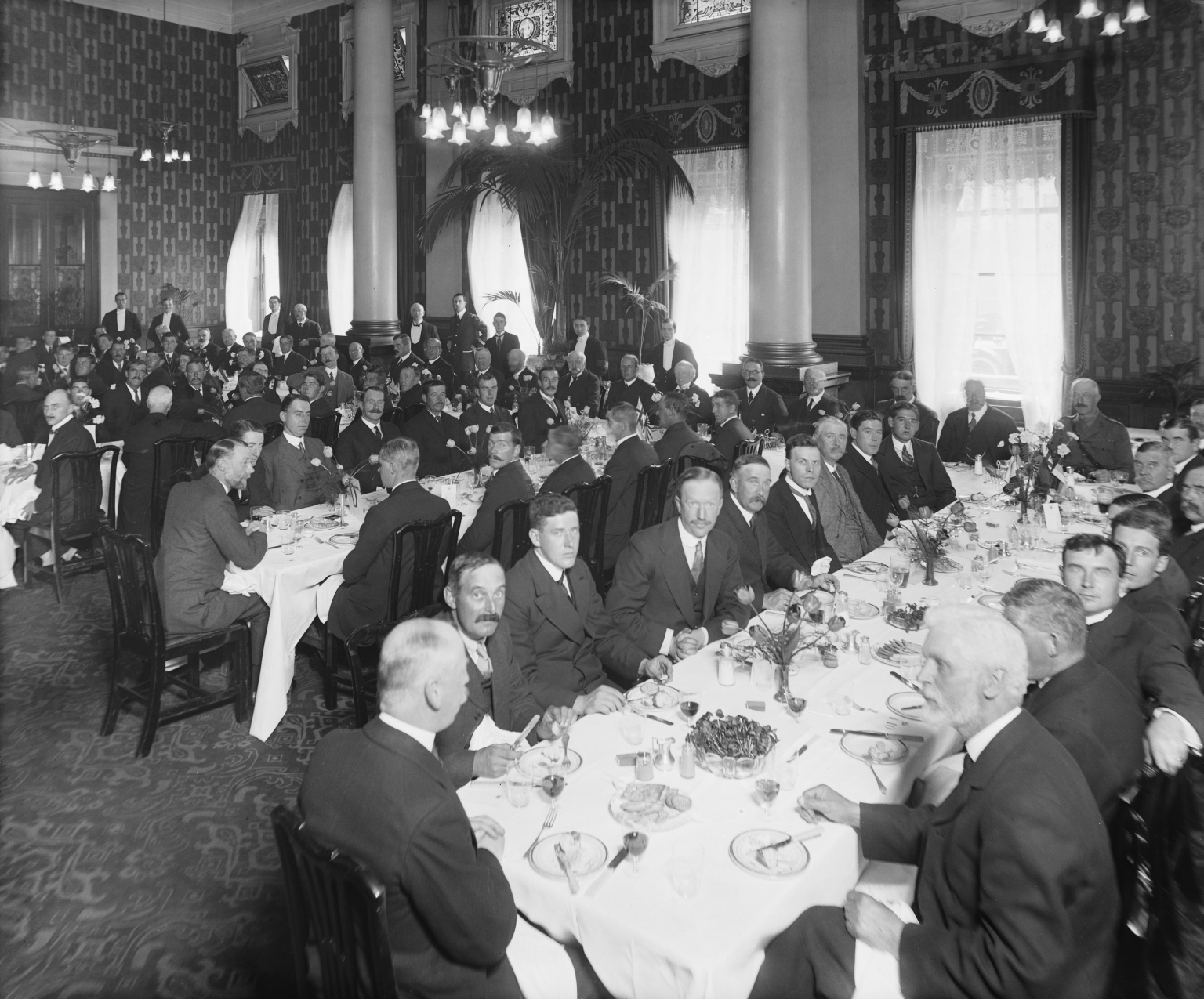
We have recently acquired Prisoners of the Red Desert written by Captain R.S. Gwatkin-Williams, a flamboyant, wonderful and genuinely funny account of the ordeal. You can view this in Search Engine or online here.
To find out more for yourself, try using our First World War resource pack.
There’s an account of the raid by one of the rescuers, SC Rolls who was a Rolls Royce armoured car driver, in his excellent book ‘Steel Chariots in the Desert’:
http://www.worldcat.org/title/steel-chariots-in-the-desert-the-story-of-an-armoured-car-driver-with-the-duke-of-westminster-in-libya-and-in-arabia-with-t-e-lawrence-with-plates/oclc/752787276
Hi there I’m looking to find any info on my great grandfather Thomas Higgins who was a fireman on the Tara in 1915 he was one of the survivors ,we don’t seem to know where he went and when he died after they was rescued on march 21 as he never returned home to Ireland,
regards jenny,
Hi. I don’t know about Thomas but he would have served in the engine room with my grandad Sub Lieutenant Griffith Hugh Roberts. Griffith perished when the torpedo struck.
Good luck.
Phil Chard
Hello Phil, I saw Griffith Hugh Roberts’ photo at the Holyhead Maritime Museum yesterday. I had heard about him in the family but never seen a picture. I’m very grateful to Betty Holmes (grandaughter of Griffith) who had provided the photo. Do you or another family member have any other pictures of Griffith’s family from Newry Street, Holyhead? I’m a 2nd cousin twice removed of Isabel Eva Chard (nee Roberts)) , my branch of the family were mariners from Porthdinllaen.
Kind regards,
Dewi
Dewi, I am Phil Chard’s sister and have researched your side of the family as well as visiting Morfa Nevin area. The majority of the family were master mariners and travelled the world in the days of sail, many lost at sea or died of disease in far-flung places. Which of the James family are you a descendant? Only Margaret married a Williams and remained in the Llyn despite her husband and two sons lost at sea locally. The remainder went back to Holyhead. Yes, photos
Hi Phil,
I am also related to Griffith, 3rd cousin 2x removed, as his grandmother was Ann James from Rhoscolyn.
Hi would anyone have any info on my Great uncle Owen Gray from
Holyhead ???
Many thanks 😊
Thanks for this blog … I have never seen it before. Captain R S Gwatkin-Williams was my Grandfather; he wrote a second book ‘Under the Black Ensign’ and his story is also to be found in ‘The Escapers’ by Eric Williams. He does exhibit a nice light hand in his writing and they are an easy and interesting read even if the characters in the books are unknown to you.
It should be noted that my grandfather made the decision to leave in order to seek help. He escaped the well at night carrying a back pack of cooked rice and using his exceptional naval skills, walked through the desert to find help. He left a note in a burned out car and it was this note that alerted the Duke to the plight of the men and their eventual rescue by the Duke.
Jenni, in book From Holyhead to Bir Hakim (and back) by Geraint S Griffith there are references to your Thomas Higgins on pages 249,256,299 – this last has his photo and thumbnail biography.The answer is he returned to sea, but believed to have died prior to 1926, leaving wife Emilyand 12 Children.5 sons served in WE2, Lance Corporal WilliamH.RE, died India, 23 Nov 1918.Other details too of lesser importance eg DOB 1861 in Larne and 2 possible situations of joining Tara.The author lives in Holyhead and may have more information since the book published in 2015. Hope this helps and I can contact Geraint if you wish, he always says no book is ever completed as more emerges over time.
Hi,
I’m researching our family tree and come across some photos and papers that have led me to the Tara. My Nain lived at 50 porth-y felyn in Holyhead before she was married. There are telegrams from an Alfred Dutton to an Ethel Hughes at that same address around the time of the rescue which are affectionate. I am just trying to find out where Ethel is on the family tree and if she married Alf Dutton.
Both my grandparents came from Holyhead. My grandfather, a professional golfer whose grandfather is the infamous ghost at South Stacks light house, Jack Jones and his parents who were both light house keepers at South Stacks. Jacks own father died on the island so his wife was offered the job of first female light house keeper in the world and kept the position until Jack, her son, took over. Jack, along with his 6 siblings were born on South Stacks.
I’m extremely proud to come from a line of such strong women. If any of you have visited the lighthouse, can you imagine looking after 7 very young children there, at the same time as being assistant light house keeper and trudging up all those steps to relight the oil lamps and clean the windows!
If anyone has any information on anyone i’ve mentioned i would love to hear from you.